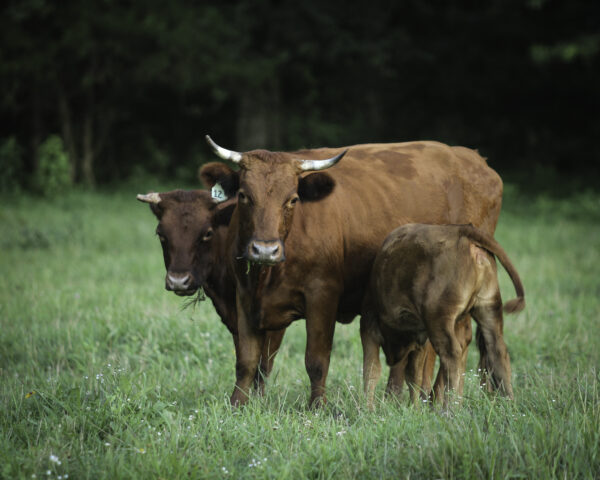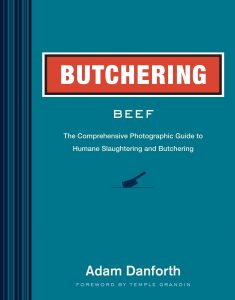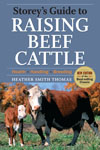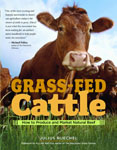
Breed Facts
Status:
Recovering
Use:
Meat, Dairy, Draft
Adult Weight:
700 – 1000 lbs.
Temperament:
Gentle, easily handled
Experience Level:
Novice – Intermediate
Notes:
Naturally small breed; efficient on limited acreage; good family cow
Country of Origin:
Ireland
DEXTER CATTLE
Standing 40 inches tall and weighing 700-900 lbs., Dexter cattle are some of the smallest cattle in the world. Although size is the breed’s most distinguishing characteristic, Dexters are a useful, productive, multi-purpose animal.
The Dexter originated in southern Ireland during the early 1800s. It was developed from the Kerry, an Irish dairy breed, by selecting for smaller size and improved beef quality. Even after the Dexter was established as a breed, its history remained intertwined with Kerry cattle. For years the two breeds were registered in a single herdbook, and some people considered Dexters to be a miniature type of Kerry. However, recent blood typing research has determined that the two cattle, though closely related, are genetically distinct breeds and should not be interbred.
The early Dexters adapted to the challenging conditions of open, mountainous Irish countryside and developed the hardy animals that are valued today. The breed name came from a “Mr. Dexter,” who promoted the cattle during the mid-1800s. They became popular with smallholders in Ireland and England, who appreciated their efficiency in producing both milk and beef on limited acreage.
In the early 1900s, records show that more than 200 Dexters were imported to North America. In July 1911 the first Kerry and Dexter Cattle Club was established in America. Registrations for the two breeds were kept separate, and each eventually formed a breed-specific club. Crosses between the two were not eligible for registration by either group. Shortly after the 1921 herdbook was published, the club was disbanded and their records were given to the Animal Husbandry Department of Ohio State University.
The American Kerry and Dexter Club was reestablished in 1940. In 1957, the official name was changed to the American Dexter Cattle Association. Renewed importation of British Dexters commenced between 1950s-1970s, although by the mid-1970s, the breed was nearly extinct in the US.
Dexter cattle are solid and compact in appearance. Most are black, though red and dun also exist. White on their udders and/or behind the umbilicus occurs occasionally, but spotting, excessive white on the body, and brindling are not desirable. The cattle are horned, and their mid-sized, black-tipped white horns arc upward. Some owners choose to leave the horns, and some dehorn them. Some also choose to breed Dexters that are naturally polled and carry polled genetics.
Two body conformations are found within the breed: cattle with average bodies and very short legs, and ones that are proportionately small in every dimension. Because the short-legged type occasionally produces nonviable offspring, it has fallen out of favor, while the proportionate type has become more popular. Dexter cattle are fertile and have few calving difficulties. They are gentle and easily handled. They are usually excellent, nurturing mothers.
Dexters have always attracted attention because of their size and have sometimes been marketed as a novelty or ornamental breed. This practice has obscured the breed’s production value. Dexters are hardy, forage-efficient cattle with excellent maternal qualities. As with other dual-purpose breeds, the quantity of milk produced varies among strains. Those that have had more dairy selection produce more milk, while strains selected for beef produce less. The milk produced is high in solids, making it ideal for butter and cheese production. Dexter beef is lean and high quality. The small size of the carcass makes the breed an excellent choice for direct marketing programs. Dexters are good browsers and can rid pastures of pest plants and can also be used as oxen.
Dexter cattle are increasing in numbers in North America and globally, and the breed seems destined to succeed. However, the challenge facing breeders is to maintain historic selection practices so that their production qualities are conserved and promoted.
Did you know:
The Livestock Conservancy helps heritage breed farmers and ranchers successfully raise endangered livestock and poultry. Tools ranging from microgrants for farm infrastructure improvements to conservation breeding plans for individual flocks and herds help fight extinction threats across America every day.

Breed Facts
Status:
Recovering
Use:
Dual
Adult Weight:
700 – 1000 lbs
Temperament:
Docile
Experience Level:
Novice – Intermediate
Notes:
Dwarf, dual purpose
Country of Origin:
Ireland
You may be interested in…




